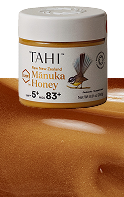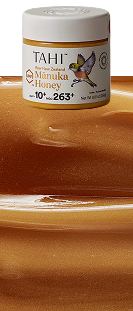Mānuka Academy
Mānuka Academy is our Mānuka education library — designed for wellness
connoisseurs to deepen their knowledge.
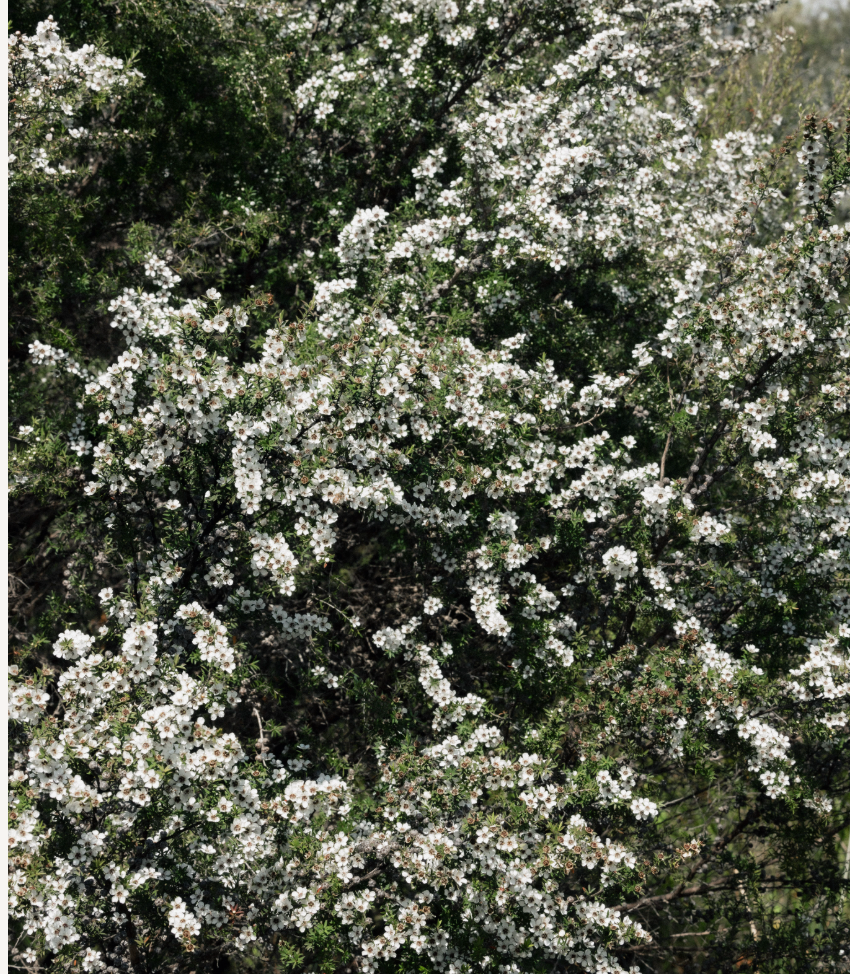
What is Mānuka?
Mānuka (Leptospermum scoparium) is an evergreen shrub native to Aotearoa New Zealand, recognized for its small, spine-tipped leaves and clusters of delicate white wildflowers.
New Zealand Mānuka produces nectar rich in dihydroxyacetone (DHA) – a naturally occurring compound. When bees collect this nectar and make honey, the DHA gradually converts into methylglyoxal (MGO), the key component responsible for Mānuka honey’s distinctive profile.
Source:https://pubmed.ncbi.nlm.nih.gov/22960208/ https://www.kew.org/plants/manuka
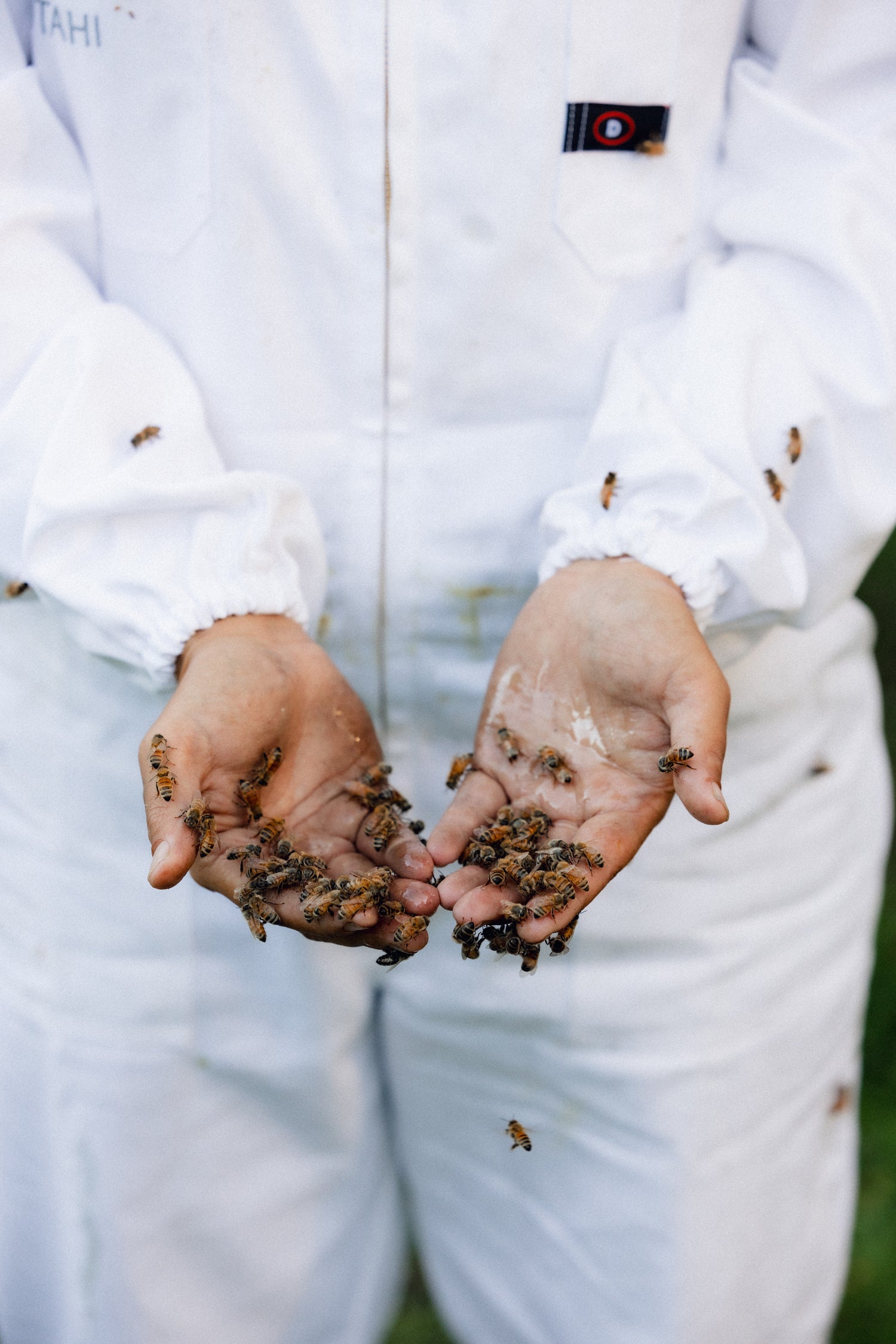
A Rare & Precious Gift
“The scarcity of this resource increases its value and makes it vulnerable to counterfeiting”
Unlike other multifloral honey, Mānuka honey is a rare and limited resource. The flowering of Mānuka occurs within a very short time frame — anywhere from two to six weeks of the year - meaning production is restricted by seasonality.
1 OF 36 BIODIVERSITY HOTSPOTS GLOBALLY
aotearoa, new zealand
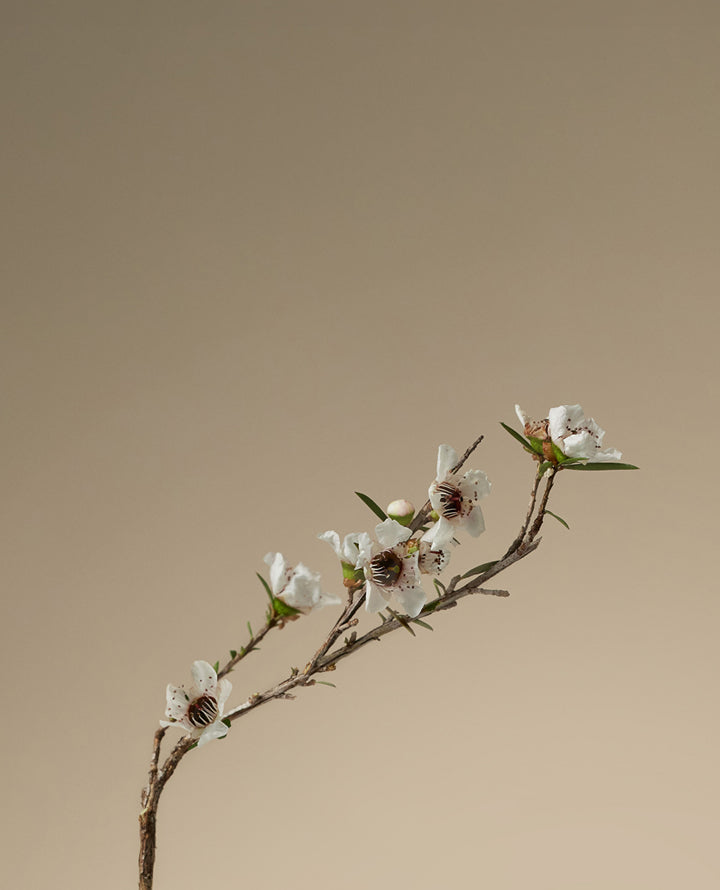
“Authentic Mānuka can only be found in Aotearoa, New Zealand”
rare. precious & endemic to new zealand
What is Mānuka Honey?
Mānuka honey stands in a league of its own. Produced exclusively in the remote Mānuka
regions of New Zealand, it boasts exceptional levels of properties, such as methylglyoxal
(MGO) and leptosperin. These levels are not found in other honeys.
Delicious, thick and with a characteristic cream to caramel colour, Mānuka honey has long been
admired as a unique honey with a delicious flavor and attributes unlike any other honey in the world.
Mānuka honey tends to be more complex in flavours than traditional honeys.
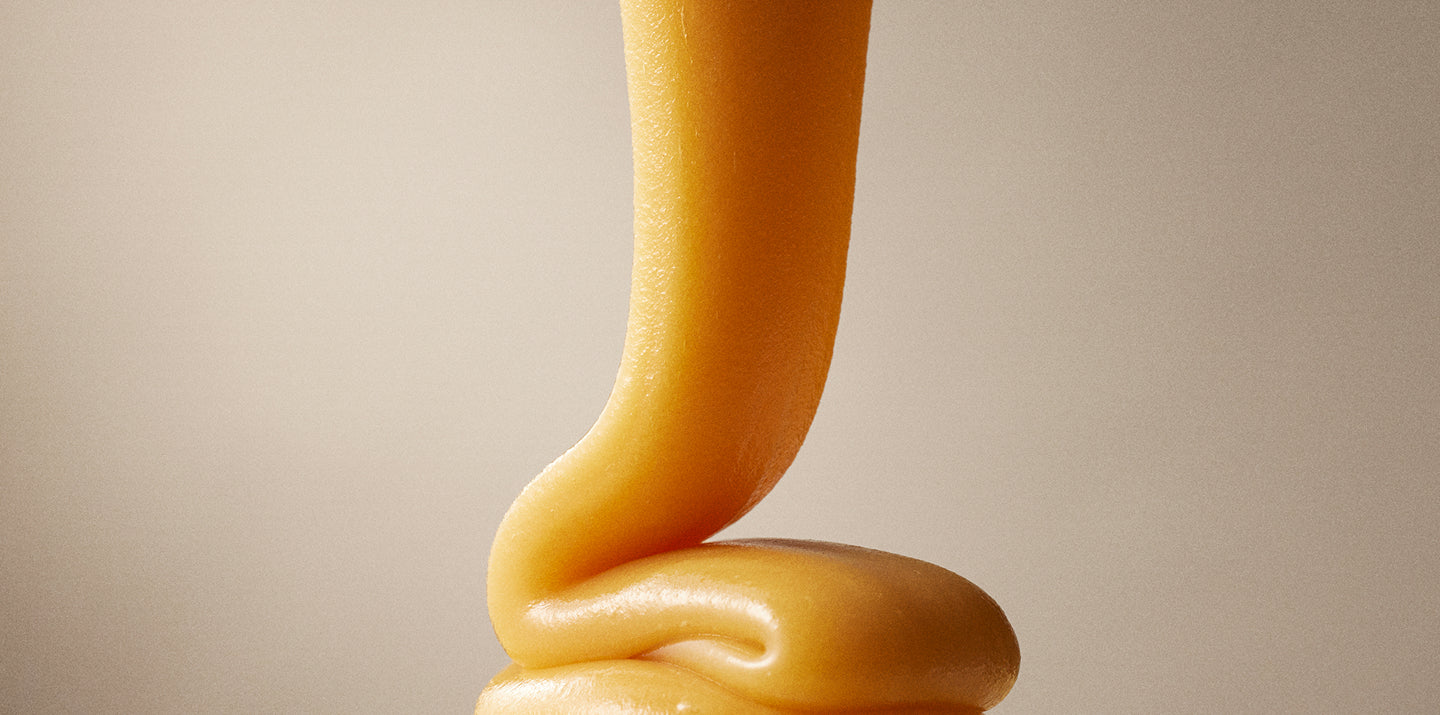
Not Your Typical Honey
compare the difference. taste the integrity. trust our source
Mānuka is highly superior to regular highly processed honey found in your local grocery store. Most regular honey has either
been heated to high temperatures (which removes the beneficial properties) or blended with lower quality sweeteners.
Honey is one of the most adulterated foods globally. The absolute minimum safeguard against fake Mānuka honey is to make
sure it was harvested, tested, certified, packed and labelled in New Zealand. The strict New Zealand government regulations
do not apply to Mānuka honey sold in bulk offshore that is not packaged in New Zealand.
Certifications You Can Trust
The role of certifications is to bring transparency and regulation, so you can have the confidence you are purchasing genuine Mānuka products. All our honeys are free from gluten, glyphosate and GMO and are third-party accredited to prove it. We don’t overheat or pasteurize our honey, nor do we add sugar, water, antibiotics or chemicals. That way you are getting pure, natural, high-quality honey in every jar.
-
Tahi is a member of the UMF™ Honey Association (UMFHA). The UMFHA trademark is the most comprehensive, independently-certified quality assurance system for New Zealand Mānuka honey. It certifies that the UMF™ grade, along with other compounds, have been independently tested. License Number: UMFHA No. 2035
-
Tahi proudly carries the FernMark License - the New Zealand Government’s official country of origin accreditation. This internationally recognised symbol confirms our products are made in New Zealand and meet strict eligibility criteria, helping you trust in the authenticity, quality and traceability of every jar.
-
The Non-GMO Project is an independent certification that confirms Tahi Mānuka honey is free from genetically modified organisms (GMOs). Genetically modified organisms refer to any organism (plant, animal, bacterial, or viral) whose DNA has been artificially modified. GMOs introduce organisms into our environment that do not occur naturally.
-
Tahi Mānuka is certified Gluten Free by SCS Global Services, meeting strict standards of less than 10 parts per million (ppm) of gluten—or lower if required by country-specific regulations. This process-based certification is verified through rigorous testing using AOAC-approved methods and accredited laboratories, providing confidence for those with gluten sensitivities.
-
Tahi Honey packaging is proudly BPA free, meaning it contains no Bisphenol A - a chemical commonly found in plastics that may pose health risks. Our commitment to BPA-free packaging ensures our honey maintains its purity from hive to jar.
-
At Tahi, every batch of our Mānuka honey is independently tested and verified to be free from glyphosate - a harmful chemical found in many common herbicides and agricultural sprays. Our hives are carefully placed in remote, untouched environments, far from potential contaminants and we work closely with our beekeepers to ensure no chemical sprays are used. This commitment protects the purity of our honey and the wellbeing of our bees and ecosystem.
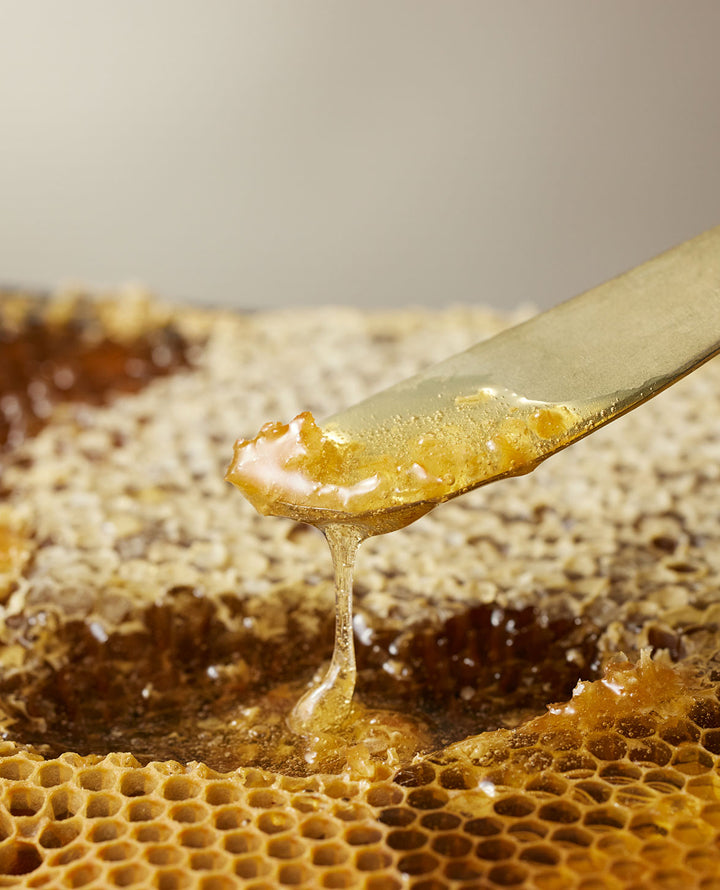
SPOT THE DIFFERENCE
UMF™ vs MGO
MGO
MGO is not an actual grading system but a measurement of a single compound within the honey- MGO measures the concentration«Methylglyoxal» in mg/kg. MGO is one of the key bioactive compounds in the Mānuka nectar. The higher the MGO, the higher the wellness properties.
UMF™
The UMF™ trademark is the most comprehensive, independently certified and internationally recognized quality assurance system for Mānuka honey. It is designed to validate Mānuka honey’s strength, authenticity, purity, shelf life and freshness by measuring 4 different markers in the honey: MGO, Leptosperin, DHA and HMF.
Methylglyoxal (MGO)
Scientists have uncovered what makes Mānuka honey so
extraordinary—elevated enzyme levels and the compound
methylglyoxal (MGO). These natural elements work together
to support Mānuka’s unique properties and set it apart
from the rest.
-
A naturally occurring bioactive compound in Mānuka honey
-
Supports healthy gut flora
-
Mānuka honey can contain over 100 times more MGO than conventional honey
Methylglyoxal (MGO)
Scientists have uncovered what makes Mānuka honey so
extraordinary—elevated enzyme levels and the compound
methylglyoxal (MGO). These natural elements work together
to support Mānuka’s unique properties and set it apart
from the rest.
-
A naturally occurring bioactive compound in Mānuka honey
-
Supports healthy gut flora
-
Mānuka honey can contain over 100 times more MGO than conventional honey
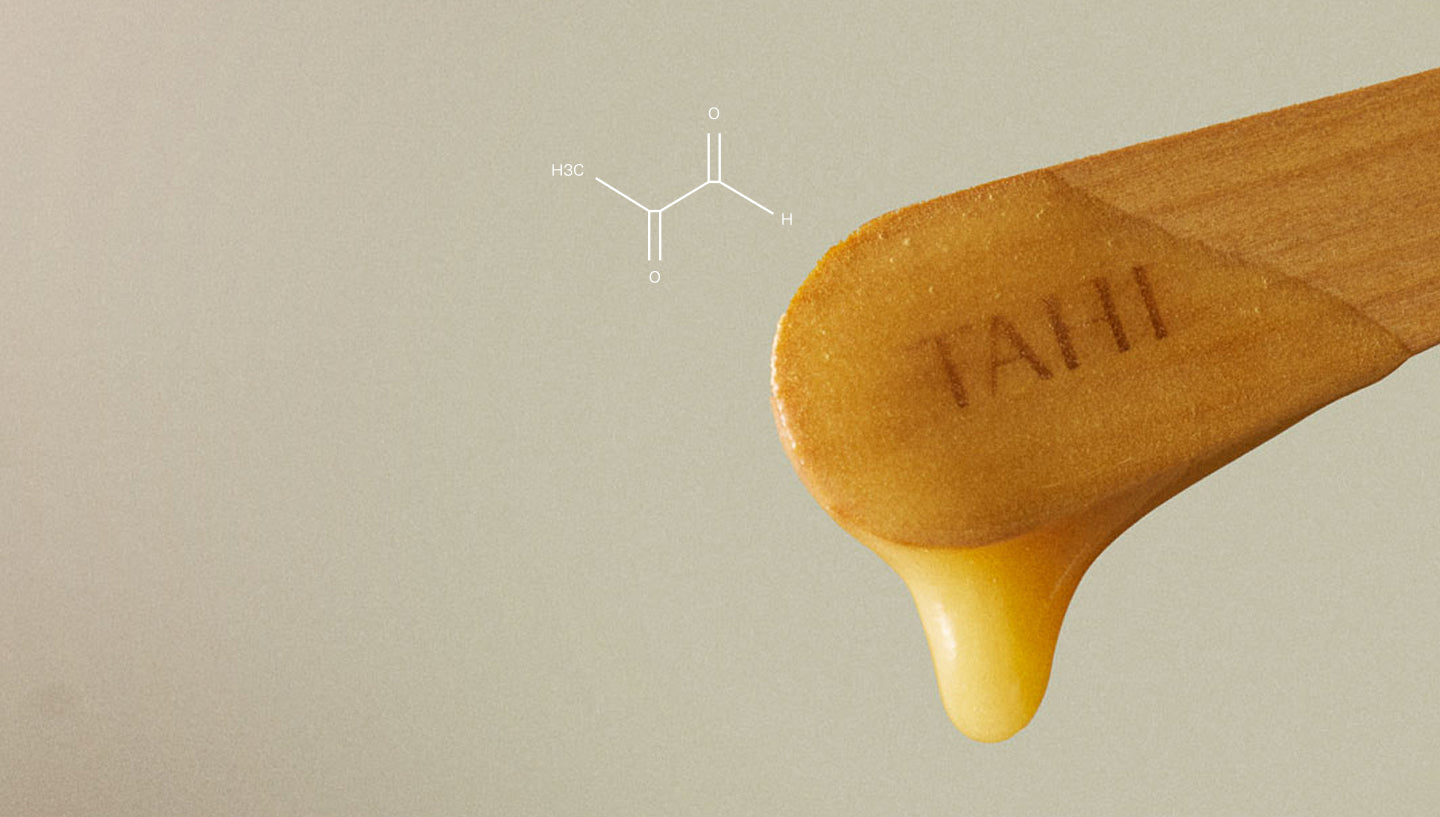
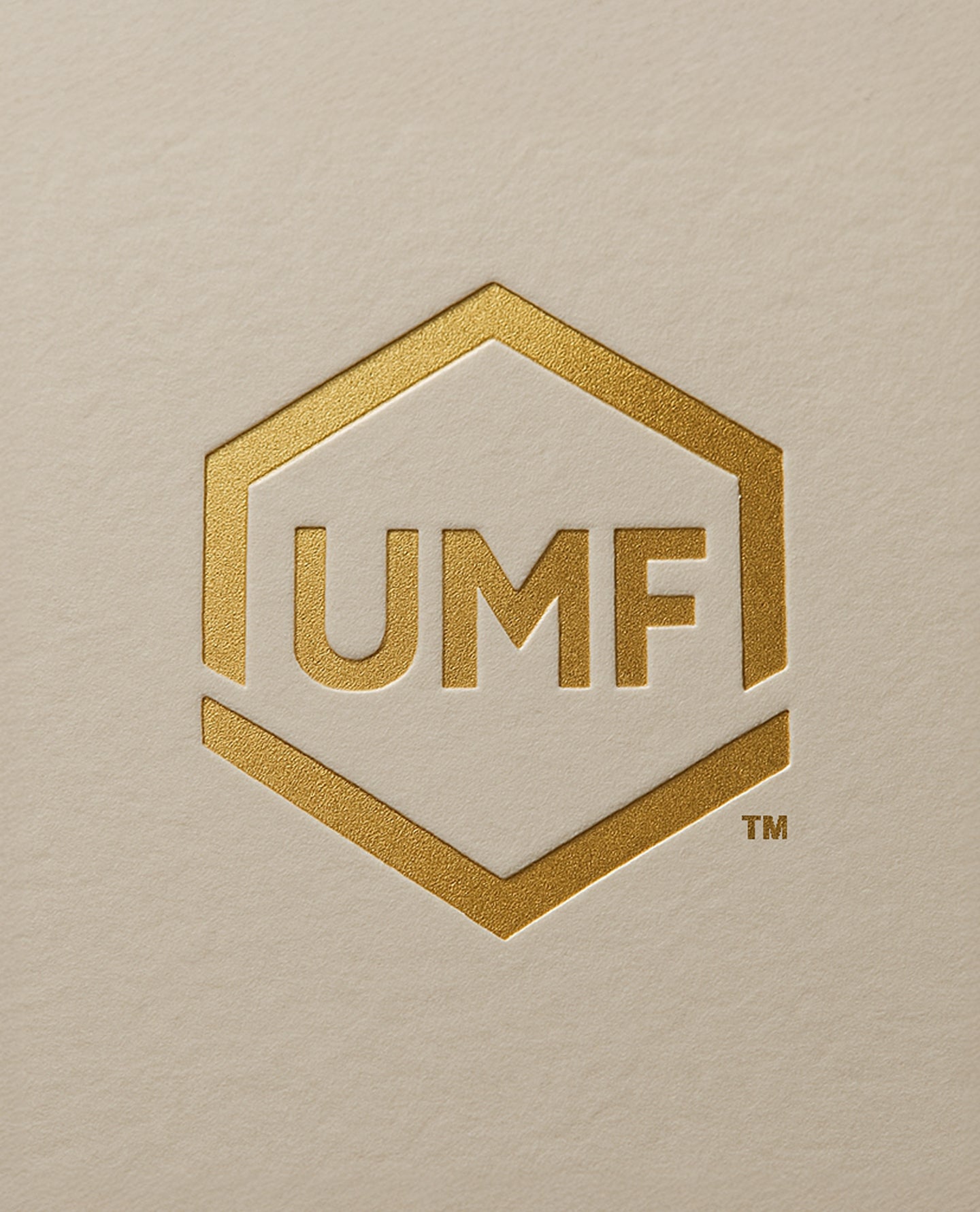
UMF™ GRADING
Four Factory Quality Assurance Test
The UMF™ trademark is the most comprehensive, independently certified and internationally recognized quality assurance system for Mānuka honey. It is designed to validate Mānuka honey’s strength, authenticity, purity, shelf life and freshness by measuring 4 different markers in the honey: MGO, Leptosperin, DHA and HMF.
-
MGO is a unique compound and is an important measure of the strength of the Mānuka's wellness properties. The higher the MGO rating, the stronger the concentration of methylglyoxal. The UMF™ quality mark ensures that Mānuka honey contains this special activity.
-
Leptosperin is a natural compound found only in the nectar of Mānuka flowers – and research shows that its concentration increases as the UMF™ rating increases. The presence of this powerful and unique compound varies that Mānuka Honey is authentic.
-
DHA (or Dihydroxyacetone) is a natural substance that slowly converts to MGO in healthy, living honey. The higher the DHA content, the longer the MGO content in your Mānuka Honey will last – which is why Mānuka Honey must have more than 70mg/kg of DHA to be UMF™ certified
-
All of our Mānuka Honey is also tested for HMF (hydroxymethylfurfural). This compound assures that honey has not been overheated or stored for too long, and is in the best condition to maintain the unique blend of natural properties found in genuine New Zealand Mānuka Honey.
UMF™ to MGO Conversion
-
UMF™ 5+
MGO 83+
-
UMF™ 10+
MGO 263+
-
UMF™ 15+
MGO 514+
-
UMF™ 20+
MGO 830+
-
UMF™ 23+
MGO 1046+
-
UMF™ 25+
MGO 1200+
The Higher the UMF™ the Stronger the Wellness Support
-

5+ 83+
-

10+ 263+
-

15+ 514+
-

20+ 830+
-

23+ 1046+
-

25+ 1200+
UMF™
MGO
Frequently Asked Questions
-
General
-
Mānuka honey is gathered from the flowers of the Mānuka Tree native from New Zealand (Mānuka is the indigenous Maori name for leptospermum scoparium). Mānuka honey is considered a superfood and is revered for its unique qualities. The Mānuka Tree is an ancient healer and has been used in traditional Māori medicine for centuries.
-
The absolute minimum safeguard against fake Mānuka honey is to make sure that it was harvested, tested, certified, packed and labelled in New Zealand. Strict New Zealand regulations do not apply to Mānuka honey sold in bulk offshore that is not packaged in New Zealand!
TAHI is a licensed member of the UMF Honey Association (UMFHA). The UMFHA is an independent body established in New Zealand in 1998 to test, control and protect New Zealand’s Mānuka honey industry. It is the only grading system that measures all 4 chemical markers (identified by New Zealand’s Ministry of Primary Industries) present in Mānuka Honey and is considered the strictest and most important Mānuka honey measurement system.
A company producing and selling UMF™ Mānuka honey must be licensed by UMFHA to sell Mānuka honey that is UMF™ rated and it is also required to have the UMF™ logo AND grading number on a label. Searching for a company’s license number can be done via the UMFHA website: www.umf.org.nz.
Each batch of Tahi honey undergoes a series of tests in an independent scientific laboratory and gets a UMF™ rating ranging from 5+ to 25+, which indicates the honey’s pureness and authenticity. UMF™ is the best way to ensure the purity and quality of Mānuka Honey.
The UMFHA is 100% transparent about what it tests and measures and those measurements, done by an independent testing facility approved by the MPI (Ministry for Primary Industries) are available on the UMFHA website thanks to the batch number displayed on your jar of honey. -
Honey does not expire however it can change so it is important to store it properly and not expose it to too much heat.
Ideally it should be kept in a stable temperature area below 77 °F (25 °C), away from sunlight. Even better if you keep it in your fridge!
-
Yes, kids can eat Mānuka honey, but like any other honey infants under 12 months old should not eat it as their digestive system is not mature enough to handle honey.
-
Tahi Mānuka honey is harvested from some of New Zealand’s most remote and pristine locations. It is raw and natural, just as nature intended - No overheating, no pasteurising and no artificial anything - It is free from GMOs and GE, with no added sugar, water or chemicals.
All Tahi honeys are independently tested and certified Glyphosate Free, Gluten Free and Non-GMO project certified. -
Mānuka honey contains high levels of Methylglyoxal (MGO), a naturally occurring compound present in most honeys in small amounts (typically 1 to 10 mg/kg). In Mānuka honey, however, MGO concentrations can be more than 100 times higher.
Mānuka honey is the one of the rarest commercially harvested honeys on the planet. Because of its unique properties and increased use in the medical, dermatological and skin care industries, the global demand for Mānuka honey exceeds the supply. -
Mānuka honey is rare and precious, it is a very limited resource - Mānuka trees only grow in remote parts of New Zealand, it has a very limited harvest period and can only be collected at certain times of the year.
Tahi has built solid partnerships with landowners to make sure our hives are placed in the most optimal locations for good quality Mānuka Honey. We make sure landowners from the local communities get a fair deal for the honey produced on their land. It is also labour intensive to take good care of our bees – we have a high beekeeper to hive ratio.
To ensure our Mānuka is genuine & graded we follow the strict UMF™ certification. Each batch is independently tested in scientific laboratories. The tests ensure we meet strict government regulations and guarantee that consumers are getting genuine, authentic and pure Mānuka honey. -
Tahi is a licensed member of the UMF™ Honey Association. UMF™ stands for “Unique Mānuka Factor”, it is a global standard that measures the purity and quality of monofloral Mānuka honey. Each batch of honey undergoes a series of tests in a government-approved independent testing facility and gets a UMF™ rating.
The UMF™ rating (the number on the jar) is the measure of the unique properties found in Mānuka honey. The bigger the number, the more potent the honey. The UMF™ scale starts at 5 and goes to 30, however 20 and above are very rare. Methylglyoxal (MGO) is the main organic compound found in Mānuka honey used to measure its potency. There is a direct scientific correlation between the UMF™ and the MGO ratings:
UMF™ 5+ = MGO 83+
UMF™ 10+ = MGO 263+
UMF™ 15+ = MGO 514+
UMF™ 20+ = MGO 829+
UMF™ 23+ = MGO 1043+
UMF™ 25+ = MGO 1200+
However UMF™ means more than simply MGO. It also measures other key markers such as:
- Leptosperin, ensuring the authenticity of mānuka honey.
- Dihydroxyacetone (DHA), ensuring the shelf life of mānuka honey.
- Hydroxymethylfurfural (HMF), ensuring the freshness of mānuka honey.
By doing this group of tests it ensures that the MGO levels have not been artificially changed, or boosted by overheating, and the special activity of your mānuka honey will remain constant throughout its shelf life.
The batch number displayed on every jar of Tahi honey ensures its traceability and customers can retrieve the test reports from the www.umf.org.nz website by entering Tahi’s license number 2035 and the batch number displayed on your jar of honey. Tahi display both the UMF™ and the MGO gradings on their jars of monofloral mānuka honey. -
Unlike refined, processed sugar and other sweet alternatives, Mānuka honey is far more than empty calories. It is a complex superfood that contains an abundance of benefits.
It is a sweeter, more nutritious alternative to white sugar, with a more balanced energy release.
It contains phenolic acids and flavonoids, which makes it a powerful source of natural antioxidants. It also contains minerals, vitamins and prebiotics to support a balanced microbiome. -
100% of profits from the sales of our honey and skincare products go back into restoring and regenerating our natural environment.
Tahi honey is eco-friendly, biodiversity positive and carbon negative. We follow a sustainable philosophy called the “4C’s”: Community, Culture, Conservation and Commerce. These guide us in our decision making: from conserving wildlife to using renewable energy; from preserving local culture to teaching future generations to take care of our planet, and our bees.
We use ethical beekeeping methods: we respect and care for our bees. This means we don’t feed them sugar water (as has been standard in the honey industry), corn syrup or antibiotics and we leave them with enough honey in their hive to keep them well fed over winter. We don’t use pollen traps because they can damage the bees’ delicate wings, nor do we collect bee venom as it can harm or even kill bees. Healthy bees = great honey.
We have won many awards for our environmental work and the quality of our honey. -
The difference between the pure Mānuka honeys is their activity level (defined by the UMF™ number) – the higher the number the more active the honey and the more intense the flavour and the wellness support.
In terms of taste, the non-UMF™ honeys are sweeter than the UMF™ honeys. More traditional. UMF™ honeys start to exhibit a depth of flavour. As you go up the scale it starts to exhibit a more intense, complex, tangy flavour profile.
In terms of which honey to choose, it depends what you want to use it for. Lower grades would be best for cooking or everyday wellbeing and the higher grades are more for specific / targeted use, such as to support your immunity and balance your gut health. -
Sustainability
-
We work hard to offset our carbon footprint based on a strategic ecosystem restoration system. What does this involve? At Tahi, our award-winning conservation nature sanctuary in New Zealand, we have restored nearly 800 acres of land to a flourishing, biodiverse ecosystem, increasing bird and plant species, as well as wetlands and indigenous trees, which ultimately works as a carbon sink. We are now expanding our land by another 4,000 hectares. By planting trees native to New Zealand, rather than pine, palm or hardwood species, which are traditionally planted to offset carbon but which only provide a short-term, limited benefit to the environment, we can help significantly offset our carbon footprint whilst also increasing biodiversity, helping Mother Nature for the long term.
Find out more about Tahi here: https://tahinz.com/ -
Thinking way beyond our company, our land and our community has always been in our DNA and shapes our sustainability philosophy at Tahi. Our work is based around four key pillars:
1. Beyond Net Zero:
Our commitment to offset more carbon than we use through ecosystem restoration on our own land in New Zealand.
2. Environment-first financial model:
100% of profits are returned directly to our conservation and community projects for a lasting impact.
3. Responsible consumerism:
Our advocacy to inspire and motivate others to become more responsible consumers.
4. Culture & community:
Our ongoing investment to culture and community, fundamental to building a healthy and resilient ecosystem.
From our commitment to only use manufacturing processes that respect the environment, to our promise to support New Zealand’s precious biodiversity for generations to come, protecting, educating and enhancing our place, people and planet is our driving force. Learn more about our sustainability philosophy and practices: https://tahinz.com/ -
100% of profits are reinvested into biodiversity regeneration.
Every product you purchase plays an active, critical role in driving our vision and generating a meaningful impact on our people, our community and our planet. -
Tahi claims to be carbon negative. How do you offset your carbon footprint?
-
Tahi claims to be carbon negative. How do you offset your carbon footprint? We’ve consciously chosen 100% recyclable PET plastic jars for all of our honeys, rather than glass. Why? Glass jars aren’t made in New Zealand, so to import and export the jars would have a significant carbon footprint – the opposite of TAHI’s “reduce, reuse, recycle” philosophy. Glass jars are also significantly heavier so more energy is required to ship them around the world. Plastic also requires less protective packaging, again helping to reduce our footprint.
We offset the light carbon footprint that we do have through planting and wetland restoration. It’s our way of going one better for nature, in every way we can. -
Shipping
-
We ship to the UK. Delivery costs are £6. They are free for all orders over £60.
-
Orders are typically delivered in 1-3 business days. During sales and peak holiday season the delivery window can increase to up to 5 business days. If you did not receive your order please contact us at contact@tahihealth.co.uk with your order number.
-
All the orders have a tracking number that you will receive by email, along with a tracking link.
-
Returns
-
We have a 14-day return policy, which means you have 14 days after receiving your item to request a return.
To be eligible for a return, your item must be in the same condition that you received it, unopened and in its original packaging. You'll also need the receipt or proof of purchase.
To start a return, you can contact us at contact@tahihealth.co.uk. If your return is accepted, we’ll send you instructions on how and where to send your package. Items sent back to us without first requesting a return will not be accepted.
You can always contact us for any return questions at contact@tahihealth.co.uk. -
Please inspect your order upon receipt and contact us immediately if the item is defective, damaged, or if you receive the wrong item, so that we may evaluate the issue and make it right.
Damaged items can be eligible for a replacement. No refund will be issued in those cases.
Certain types of items cannot be returned, like perishable goods (such as food, honey), and personal care goods (such as beauty products, skincare). Please get in touch if you have questions or concerns about your specific item.
Unfortunately, we cannot accept returns on sale items or gift cards. -
We will notify you once we’ve received and inspected your return to let you know if the refund was approved or not. If approved, you’ll be automatically refunded on your original payment method within 10 business days. Please remember it can take some time for your bank or credit card company to process and post the refund too.
If more than 15 business days have passed since we’ve approved your return, please contact us at contact@tahihealth.co.uk
